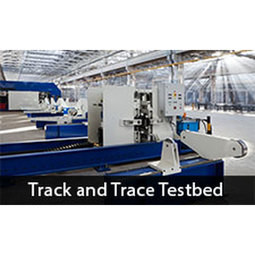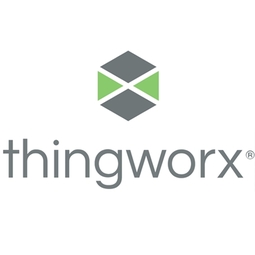
Technology Category
- Platform as a Service (PaaS) - Application Development Platforms
Applicable Functions
- Product Research & Development
Use Cases
- Track & Trace of Assets
The Customer
TU Darmstadt
About The Customer
TU Darmstadt- located in Darmstadt, Germany-registered for the PTC IoT Academic Program and gained free access to ThingWorx, an application development platform, and supporting curriculum to help bring the students’ IoT ideas to life.
The Challenge
An Advanced Design Project toward IoT was open to a handful of
undergraduate students in TU Darmstadt from various backgrounds. The team’s goal was to develop an IoT solution by semester’s end.
Based on their personal experience and the survey results—which told them 85% of people had forgotten to pack something important on a trip—they decided to apply the IoT to the world of travel. Armed with ThingWorx and PTC University eLearning Libraries, they began to develop the project idea and scope.
The Solution
Haag’s students decided to leverage Internet of Things technology to prove the concept of a smart suitcase. They chose to develop an app to enable a suitcase—via a scanner that can read QR codes—to recognize its contents and help its owner better plan their travel.
The concept rested on the assumption that in the future, clothing manufacturers will tag their wares with unique codes, allowing a smart suitcase to read its contents and know what is missing. That forecast was supported by the project team’s survey, which found that 75% of university students would not object to having ID tags on their clothes.
To demonstrate the possibilities, the project team created a digital version of a typical wardrobe, then fed that data into ThingWorx and used the IoT platform to create a mashup that showcased the capabilities of their proposed smart suitcase. The ThingWorx mashup acts as an inventory manager for the traveler—ensuring that all the clothes he or she intends to pack end up in the suitcase.
To get a free demo of ThingWorx 8: http://solutions.iotone.com/thingworx
The concept rested on the assumption that in the future, clothing manufacturers will tag their wares with unique codes, allowing a smart suitcase to read its contents and know what is missing. That forecast was supported by the project team’s survey, which found that 75% of university students would not object to having ID tags on their clothes.
To demonstrate the possibilities, the project team created a digital version of a typical wardrobe, then fed that data into ThingWorx and used the IoT platform to create a mashup that showcased the capabilities of their proposed smart suitcase. The ThingWorx mashup acts as an inventory manager for the traveler—ensuring that all the clothes he or she intends to pack end up in the suitcase.
To get a free demo of ThingWorx 8: http://solutions.iotone.com/thingworx
Operational Impact

Case Study missing?
Start adding your own!
Register with your work email and create a new case study profile for your business.
Related Case Studies.

Case Study
IoT Applications and Upgrades in Textile Plant
At any given time, the textile company’s manufacturing facility has up to 2,000 textile carts in use. These carts are pushed from room to room, carrying materials or semi-finished products. Previously, a paper with a hand-written description was attached to each cart. This traditional method of processing made product tracking extremely difficult. Additionally, making sure that every cart of materials or semi-finished products went to its correct processing work station was also a problem. Therefore, the company desired an intelligent solution for tracking assets at their factories. They also wanted a solution that would help them collect process data so they could improve their manufacturing efficiency.

Case Study
Goldcorp: Internet of Things Enables the Mine of the Future
Goldcorp is committed to responsible mining practices and maintaining maximum safety for its workers. At the same time, the firm is constantly exploring ways to improve the efficiency of its operations, extend the life of its assets, and control costs. Goldcorp needed technology that can maximize production efficiency by tracking all mining operations, keep employees safe with remote operations and monitoring of hazardous work areas and control production costs through better asset and site management.

Case Study
Buoy Status Monitoring with LoRa
The Netherlands are well-known for their inland waterways, canals, sluices and of course port activities. The Dutch Ministry of Infrastructure indicates that there are thousands of buoys and fixed items in and near water environments that would profit from IoT monitoring. One of the problems with buoys for example, is that they get hit by ships and the anchor cable breaks. Without connectivity, it takes quite some time to find out that something has happened with that buoy. Not to mention the costs of renting a boat to go to the buoy to fix it. Another important issue, is that there is no real-time monitoring of the buoys at this moment. Only by physically visiting the object on the water, one gains insight in its status.
Case Study
IoT Based Asset Tracking System
The existing system used by the customer could only track a few thousand assets and was able to generate only a few standard set of reports. As the number of assets tracked grew exponentially, the system started to break at the seams. The Tracking devices were from different manufacturers following different protocols. There was no proper integration among the devices to send instant alerts. There are thousands of tracking devices spread across multiple geographies, that are moving. The configuration and troubleshooting of these devices incurred heavy costs, which was a logistics challenge. The existing system did not provide sophisticated Analytics, Business Intelligence and Insights from the data

Case Study
IIC - Track and Trace Testbed
Factory systems can detect - within a meter - the location of a tool; Misuse of tools can result in serious accident or injury; The production of many industrial and consumer goods requires exacting work - down to the precise force used to tighten a screw. GOAL Manage smart, hand-held tools in manufacturing, maintenance, and industrial environments







